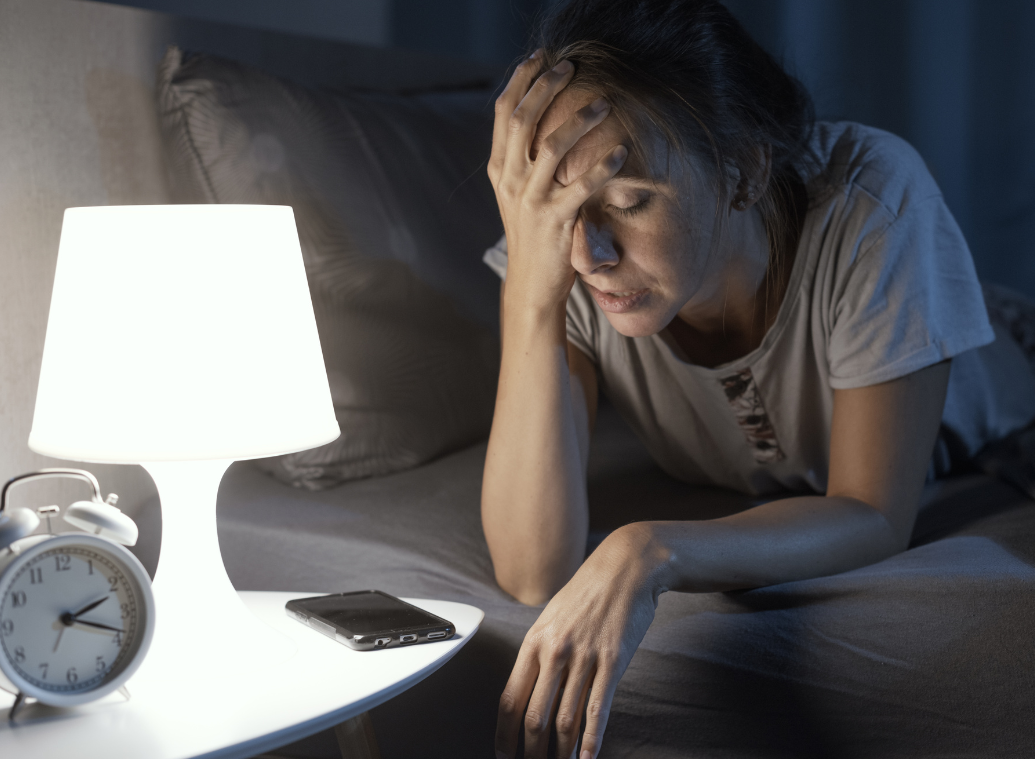AS and sleep: how can you sleep better despite the pain?
Published Feb 7, 2025 • By Candice Salomé
Ankylosing spondylitis is a chronic inflammation of the joints, mainly affecting the spine and sacroiliac joints.
In addition to its characteristic pain and stiffness, it can considerably disrupt patients' sleep, affecting their overall quality of life.
So what is the link between ankylosing spondylitis and sleep disorders? How does poor sleep affect the patients' health and their AS? And how can they get a better sleep?
We explain it all in our article!

What is ankylosing spondylitis?
Ankylosing spondylitis is a chronic inflammatory disease characterized by damage to the axial skeleton (the spine and the sacroiliac joints of the pelvis).
AS manifests itself through painful attacks (known as flare-ups) and periods of remission.
The common symptoms of AS include:
- At the onset of the disease, flare-ups of back or lumbar pain occur, but may seem trivial. These flare-ups last a few days or even a few weeks and eventually subside. As a result, diagnosis is often delayed, by an average of 8 years since the appearance of the first symptoms, which in its turn delays the start of treatment. The pain that should give cause for alarm is inflammatory spinal pain, meaning that it tends to occur at night and wake people up at around 2 or 3 in the morning. This pain does not subside with rest and lasts for more than 3 months.
- Pain, also of the inflammatory type, occurs in one buttock. It can sometimes affect both buttocks, or even tilt (sometimes to the right, sometimes to the left).
- Pain may also occur in the joints between the sternum and the sides, or between the sternum and the clavicle.
- One heel (or even both) may be painful in the morning when you wake up. The situation tends to improve gradually when walking.
- Fingers or toes may swell.
- Certain large joints (knees, ankles, shoulders, hips, etc.) may be painful and stiff.
In the morning, AS pain is accompanied by a feeling of stiffness that takes a long time to disappear, known as the morning stiffness.
What is the link between ankylosing spondylitis and sleep disorders?
Ankylosing spondylitis affects sleep through a number of physiological mechanisms. The chronic inflammation characteristic of the disease leads to pain that often intensifies at night, when the body is immobile. This phenomenon is explained by the accumulation of inflammatory fluid around the joints, which amplifies the feeling of stiffness and discomfort. This pain directly disrupts the process of falling asleep and causes people to wake up at night.
In addition, morning stiffness, a common symptom of AS, reflects the impact of the lack of movement on the joints during sleep. This rigidity can compromise the duration and quality of deep sleep, which is essential for physical and mental recovery.
AS patients also report general disorders of the circadian cycle. The anxiety associated with managing the disease, coupled with constant night-time discomfort, can contribute to insomnia. Over time, these disturbances create a vicious circle: lack of sleep amplifies the perception of pain, reducing the body's ability to manage inflammation.
How does lack of sleep affect people with ankylosing spondylitis?
Disturbed sleep has a profound effect on the well-being of people with anlylosing spondylitis. The resulting state of chronic fatigue weakens the body, making it less able to tolerate pain. This vicious circle, in which lack of rest accentuates inflammatory symptoms, contributes to an overall worsening of the disease.
In addition, lack of deep sleep, which is crucial for tissue regeneration and the immune system, increases vulnerability to infection and slows down recovery. Patients may also develop mood disorders, such as irritability or depression, aggravated by pain and insomnia, which can have a direct impact on disease management.
Finally, recurrent sleep disorders disrupt cognitive functioning, affecting concentration and memory, which can complicate patients' professional and social lives.
How can you improve your sleep if you are suffering with ankylosing spondylitis?
Reduce pain before going to sleep
To sleep better, it's essential to tackle the causes of discomfort head-on. Strict adherence to the treatment prescribed by your doctor is an essential first step. Anti-inflammatory medication, biotherapy and other targeted drug treatments help limit inflammation and, consequently, pain.
In addition, certain natural treatments can help you prepare your body for the night. For example, gentle stretching before bed helps relieve joint and muscle tension. Localized heat therapy, such as applying a hot water bottle to painful areas, also helps you relax.
Set the right environment
The right sleeping environment can make all the difference for AS patients. The choice of an ergonomic mattress, offering appropriate support for the spine, is crucial. Similarly, a suitable pillow helps maintain a comfortable, aligned position throughout the night.
The bedroom should be a place of calm. Moderate room temperature, around 18°C, helps the body to relax. It is also important to minimize sources of light and noise by using blackout curtains or earplugs if necessary. Finally, opting for a sleeping position that limits tension, such as sleeping on your side with a cushion between your knees, can relieve pain.
Have healthy sleeping habits
Daily habits have a direct influence on sleep quality. Establishing a relaxation routine before bed can help you fall asleep. This can include winding-down activities such as reading, meditation or a deep breathing session.
It is also advisable to limit caffeine consumption and exposure to screens in the hours before bedtime. Regular but moderate physical activity can also play a positive role, helping the body release the accumulated tension.
In a nutshell..
Good quality sleep is an essential part of living well with ankylosing spondylitis (AS). Although it can be disrupted by pain and stiffness, simple adjustments such as an ergonomic mattress, a wind-down routine and better pain management can considerably improve your nights. If the problems persist, do not hesitate to talk to your doctor and ask for advice.
Take care!
Sources :
S. Bouden, L. Rouached, A. Ben Tekaya, I. Mahmoud, T. Rawdha, O. Saidane, L. Abdelmoula, Les troubles du sommeil chez les patients atteints de SPA, Revue du Rhumatisme, Volume 90, Supplement 1, 2023, Page A192, ISSN 1169-8330, https://doi.org/10.1016/j.rhum.2023.10.281.
Les symptômes, le diagnostic et l'évolution de la spondylarthrite, Ameli
Comment le contrôle de la maladie influence-t-il le sommeil des personnes atteintes de spondylarthrite?, Société Suisse de la spondylarthrite ankylosante
Spondylarthrite ankylosante, soulagement par le froid ou le chaud, Climso
Spondylarthrite Ankylosante : Soulagement et Confort avec les Bons Coussins et Oreillers, Inphysio
Dormir avec une spondylarthrite, une gageure ?, Spondylarthrite Info
Les exercices de haute intensité améliorent fatigue, sommeil et humeur, Société Suisse de la spondylarthrite ankylosante
Comments
You will also like

Ankylosing Spondylitis: More Than Fifteen Years of Pain to Finally Live a Better Life
Oct 16, 2018 • 5 comments

 Facebook
Facebook Twitter
Twitter
